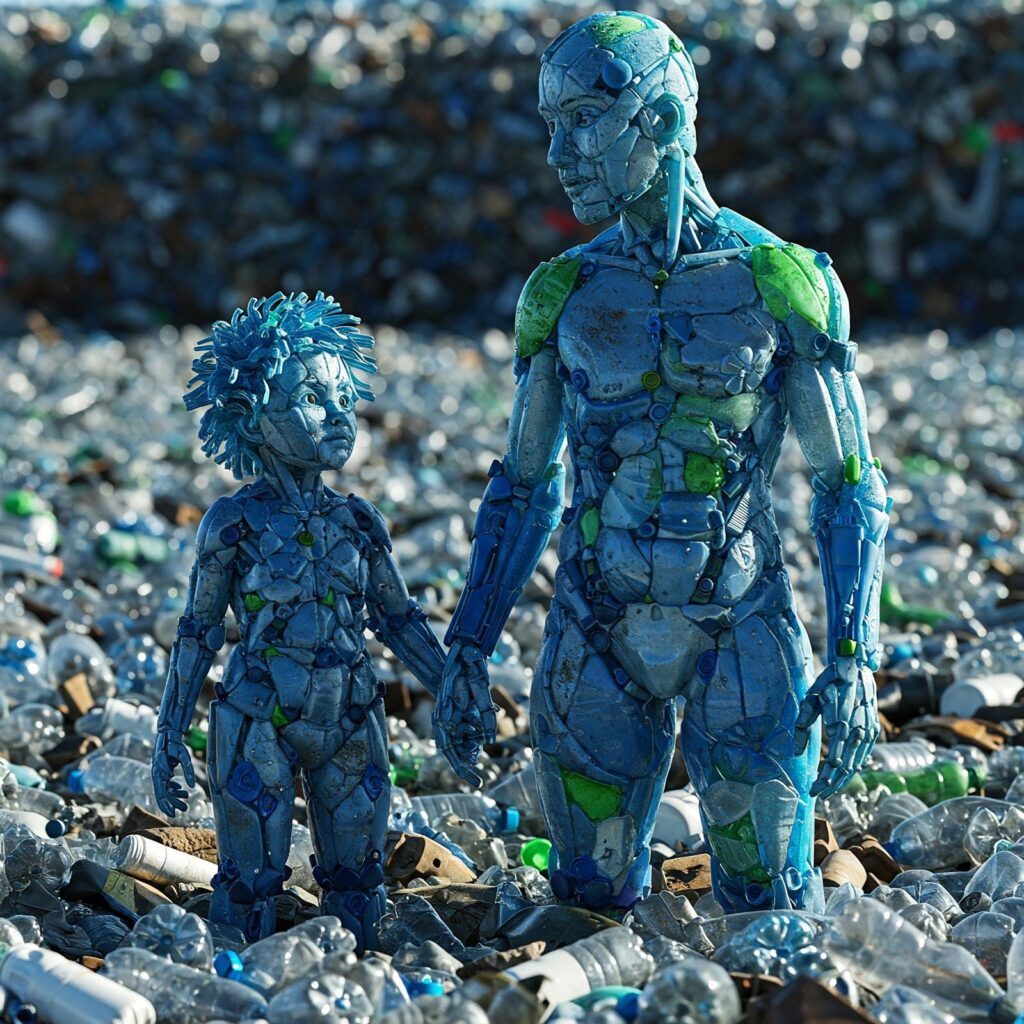Microprotests Against Microplastics
With plastic everywhere– from our food packaging to goodie bags to the contents of the goodie bags(why??)– I sometimes feel we will never clean it up. Maybe the Great Pacific Garbage Patch will soon just be all of Earth. Even my kids sometimes ask, “Mom, does it even matter?” when I ask them not to use single-use plastic cups. But then I remind them (and myself): it does matter. When that inner voice whispers, “One more plastic bottle won’t make a difference,” I stick to my rule of zero plastic water bottles.
By now, you’re probably aware of plastics, microplastics, and even nanoplastics. You likely carry your own steel water bottle. And while there are countless changes you can make to reduce your exposure to plastic and their environmental impact, here are just a few bite-sized actionable steps.
Starter kit: Dr. Angel’s microprotests against microplastics.
Rethink Your Coffee Routine. Have your coffee or tea at home or enjoy it in ceramic or glass at your favorite local coffee shop. I recently learned that even paper cups are lined with plastic (typically polyethylene or polypropylene), which prevents liquid seepage (yay!) but releases microplastics into your drink (no!)– especially when exposed to heat.
A 2024 study found that disposable cups release more microplastic particles when containing beverages over 122 degrees Fahrenheit. Hot coffee is typically served at 150-170 degrees. For iced espresso drinks (my favorite), the issue persists because hot espresso is poured directly into plastic cups, accelerating microplastic release.
Be proactive: ask your barista to prepare your drink in a ceramic or glass “for-here” cup. Another option is to ask them to rinse the cup before pouring hot liquids. Yes, I said rinse. Research shows that rinsing disposable cups can reduce microplastic release by 50–65%. Less awkward, perhaps, is bringing your own non-plastic container—many coffee chains, including Starbucks, allow this even for mobile app orders. This simple switch reduces waste while minimizing your exposure to plastics and additional chemicals like cadmium and arsenic, found in paper cups.
If you are able to sit for 10 minutes and enjoy your coffee, you are also giving yourself some time for people watching, deep breathing, and listening… aka mindfulness. A nice bonus.
No Plastic Water Bottles. Period. Establish a “no plastic water bottle” rule for yourself and model it to your loved ones. Studies show that beverages stored in plastic bottles contain varying levels of microplastics, including polyethylene (PE), polypropylene (PP), and PET particles. These plastics can leach into the water and accumulate in the human body, posing risks like endocrine (hormones like thyroid) disruption and oxidative stress.
Plastic production is expected to double in the next 15 years. By reducing demand, we can disrupt supply chains and encourage systemic change. By carrying a reusable steel or glass bottle, we can reduce demand for plastic, but only if everyone believes their micro-protest matter.
Avoid Microwaving Food in Plastic Containers. When food is microwaved in plastic containers, the release of microplastic particles skyrockets from thousands to millions per serving. These particles can migrate into food along with harmful plasticizers like phthalates, which are linked to damage in various organ systems.
Switch to glass or stainless steel containers for food storage, packing lunches, and reheating whenever possible. This small change significantly reduces exposure to harmful chemicals while promoting long-term sustainability.
Life in plastic– We are what we eat
Our bodies were not designed to eliminate microplastics. A sobering 2025 study published in Nature Medicine revealed bioaccumulation of microplastics in human tissues, including the brain. Researchers found higher concentrations of plastics in individuals with dementia compared to those without, though it remains unclear whether plastics contribute directly to neurodegeneration or result from disrupted blood-brain barriers seen in those conditions.
Plastics disrupt organ systems across species. A literature review in 2022 showed that microplastics affect nearly every biological system in animals—from gut lining damage to cardiac stress. The longer we live, the more plastics accumulate in our bodies, a frightening and sad reality for future generations.
Every choice matters. When you choose reusable and safer alternatives, you are encouraging those around you to do the same. And if you are a parent, modeling for your kids creates a non-stop ripple.
Please Share
If you liked what you read, please share with your friends, follow on your favorite platform, and subscribe below. I will do my best to give you science backed reads that are worth your time.
For private consultations, please submit a request on www.DrAngel.com.
References:
Akbulut, Selen et al. “Microplastic Release from Single-Use Plastic Beverage Cups.” Foods (Basel, Switzerland) vol. 13,10 1564. 17 May. 2024, doi:10.3390/foods13101564
Snekkevik, Vilde K et al. “Beyond the food on your plate: Investigating sources of microplastic contamination in home kitchens.” Heliyon vol. 10,15 e35022. 24 Jul. 2024, doi:10.1016/j.heliyon.2024.e35022
Nihart, A.J., Garcia, M.A., El Hayek, E. et al. Bioaccumulation of microplastics in decedent human brains. Nat Med (2025). https://doi.org/10.1038/s41591-024-03453-1
Zolotova, Natalia et al. “Harmful effects of the microplastic pollution on animal health: a literature review.” PeerJ vol. 10 e13503. 14 Jun. 2022, doi:10.7717/peerj.13503



